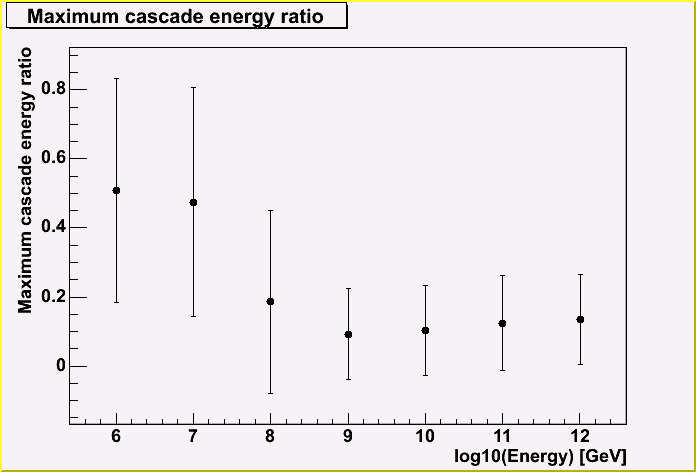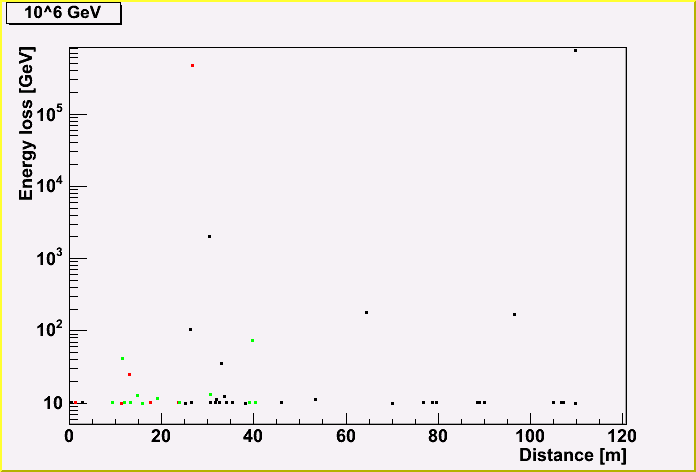
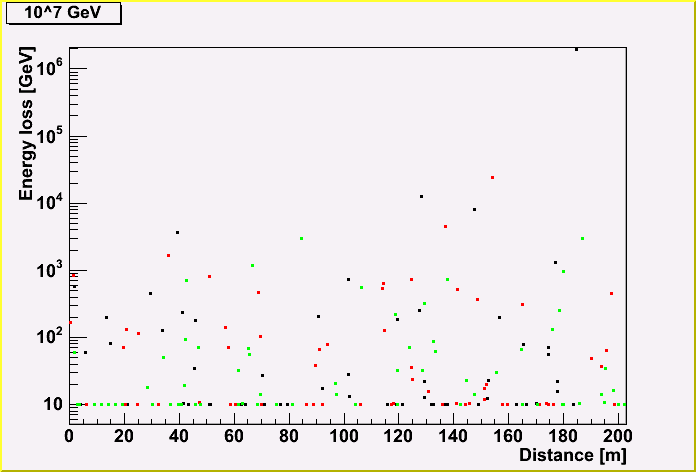
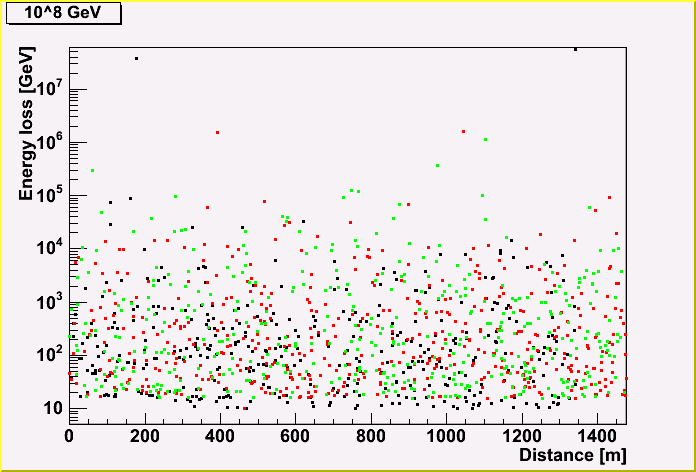
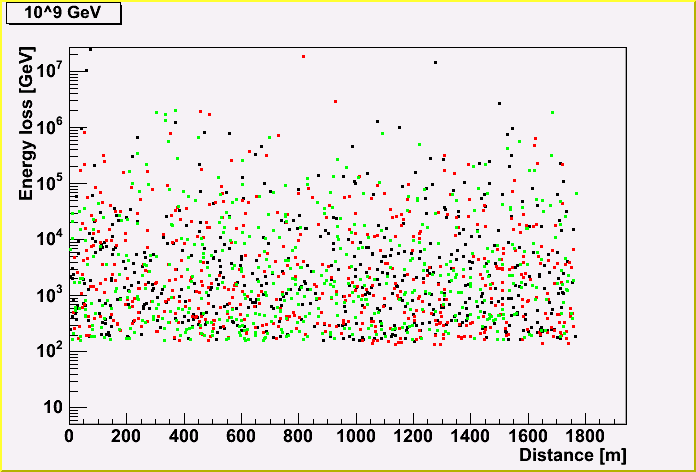
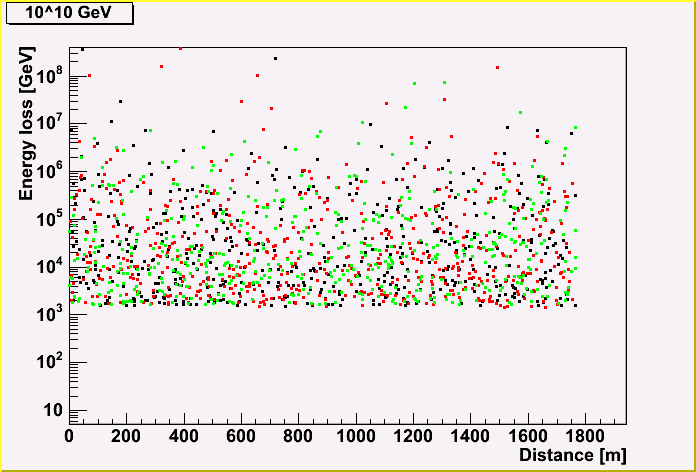
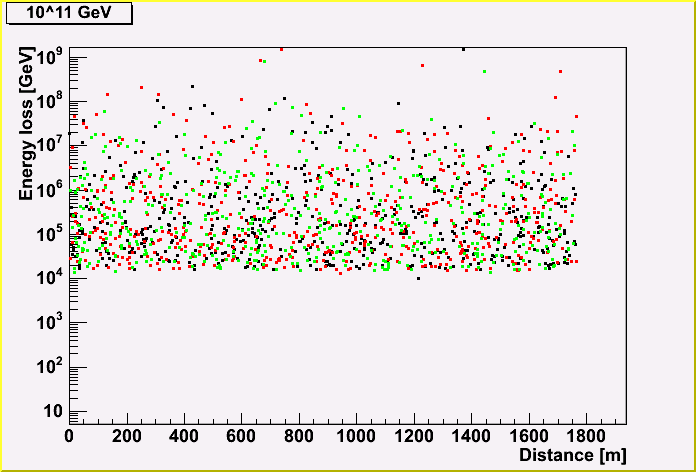
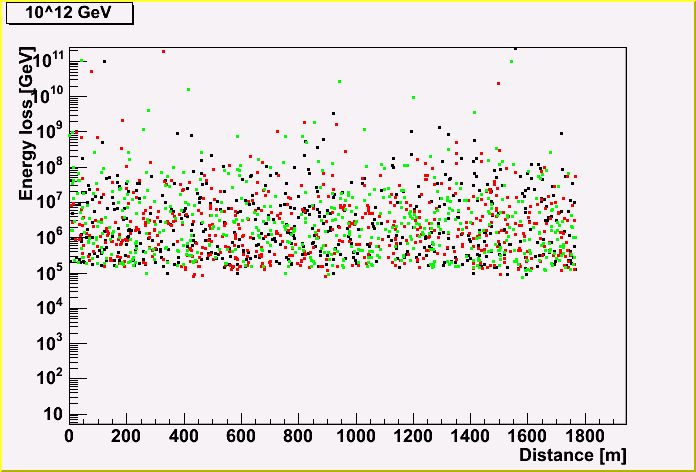
The purpose is to study the tauon cascade properties and the better EHE event reconstruction.
Tau MC are generated using JULIeT.
The energy of the parent tau is from 10^6 to 10^12 GeV.
By using the MC, I checked the properties of the cascades generated by a parent tau.
The energy loss (created cascade energy) of a tauon track is shown, depending on the distance along the track.
Each point represents the energy loss, and the same color represents the same track. (There three tracks are shown in a plot.)
As you can see, the more initial tauon energy, the more energy loss, as same as a muon case.
As a prominant feature only for a tau, a low energy tauon decay, so you can see such a tauon doesn't run a distance so much.







Then, I plotted the average and the deviation of the energy loss every distance.
The notable feature is a tauon of 10^6 GeV doesn't run beyond ~300 m
The energy loss of a low energy tau doesn't change so much.
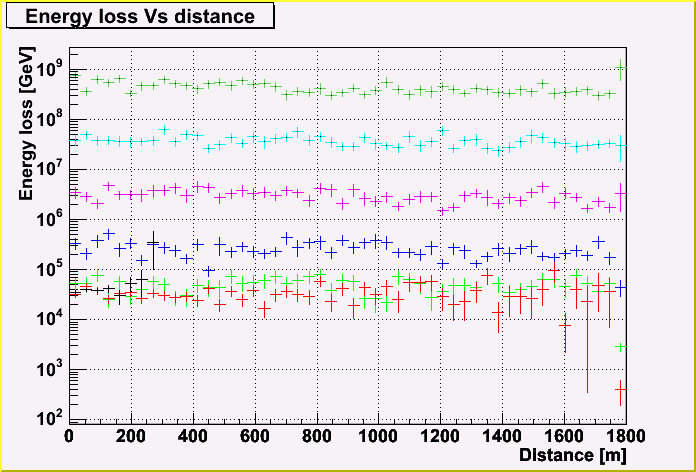
Here, the histogram of the energy loss by a cascade.
Here, you see again the more initial tauon energy, more energy loss.
The prominant feature is that there are peaks due to a tau decaies for lower energy tauons.
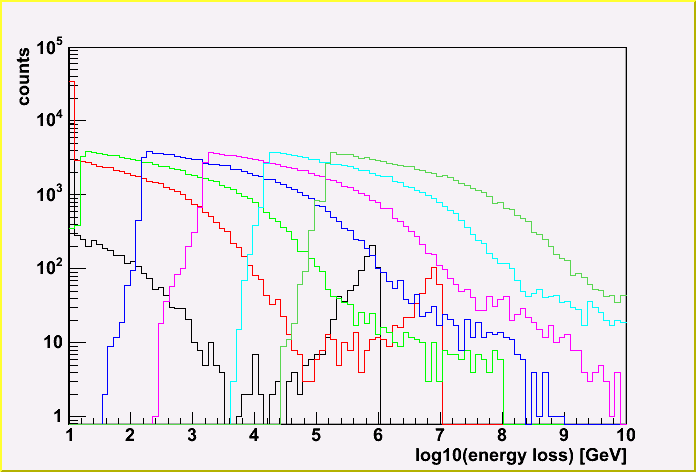
The energy loss by each cascade generated by a parent tauon is shown for each energy.
Each energy loss is averagely less than 0.1 % of the parent tauon energy for high energy, but it goes up to ~7% at 10^6 GeV due to the decay. So, the enregy loss is not linear to the initial energy at low energy.
The deviation is quite big (~an order of magnitude). Here, the deviation is the one of the distribution for a track (event).
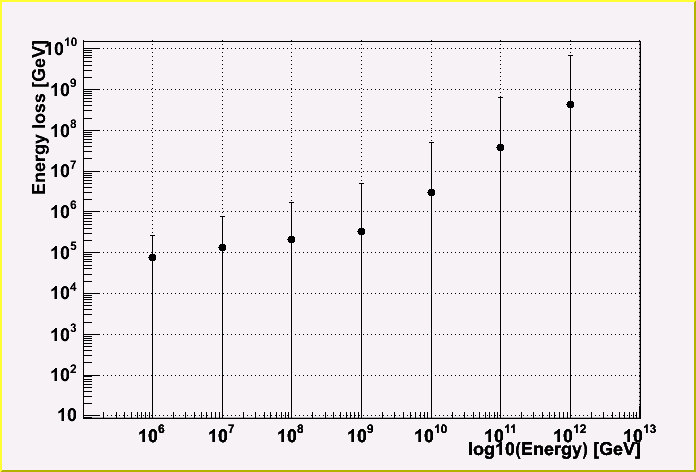
Here, the interval of each cascade is shown for each initial tauon energy.
The interval is roughly same, and it's 3 m, not depending the parent tauon energy.
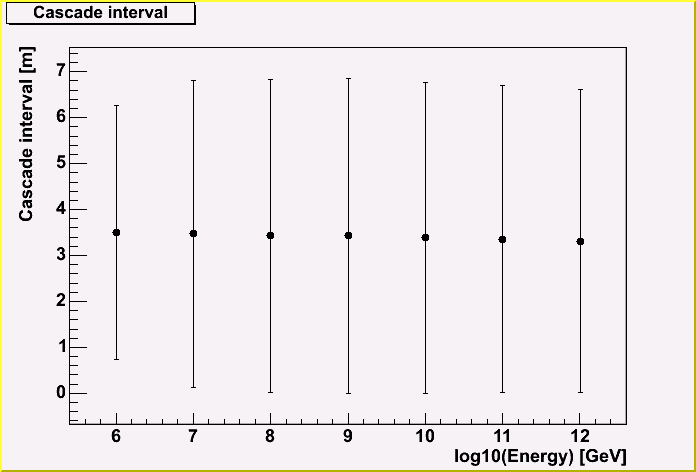
Here, the number of cascades in a track is shown for each energy.
There is a drop of the cascade number at low energy due to the decay.
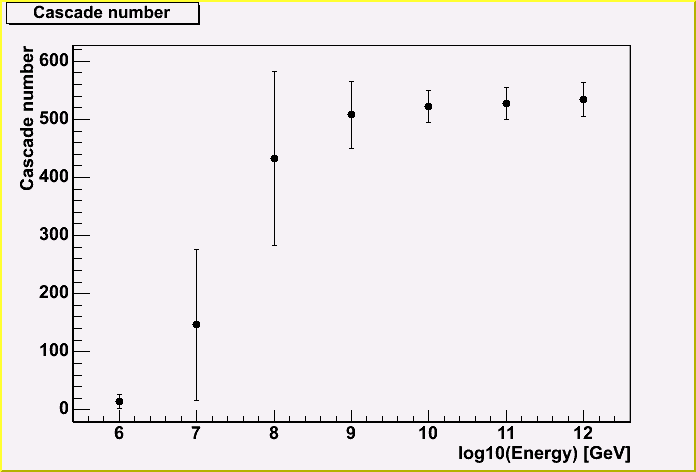
As you can see, there is a big deviation (nearly 100 %) compared to the muon one. This implies that the energy reconstruction of a tau would be more difficult than that of a muon.
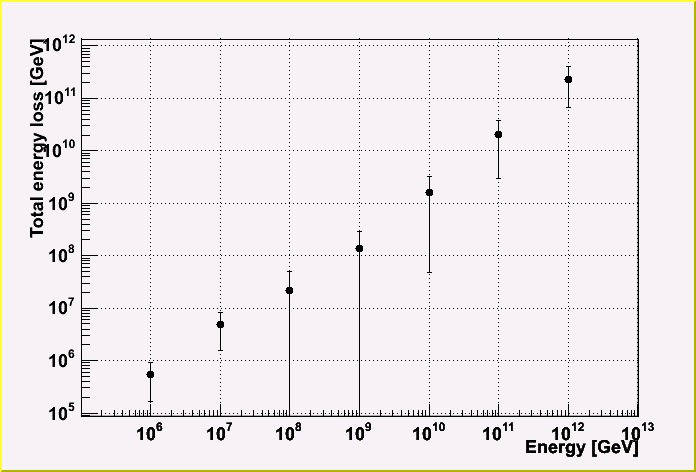
At last, the ratio between the maximum cascade in a track and the initial energy of a tauon is shown.
As you can see, there is a big energy loss due to the decay at low energy though again the deviation is large. But, the this information will be somewhat useful to distinguish between a muon and a tau.
